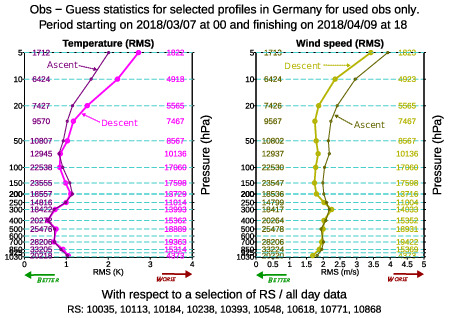Accueil > Our research topics > Adaptive Observation > Doubling the radiosounding network at lower cost with descent data collection
by Alexis Doerenbecher
published in the Météo-France 2018 Research Report (ISSN : 2116-4541)
Despite progress in satellite observation, the global radiosonde network retains the privileged status of “backbone” of the atmospheric observation system. However budget cuts manage in triggering reductions of this network since this mode of observation remains expensive (between 100 and 300 euros per ascent). In this context, the collection of observations at the descent of the probe makes it possible to significantly increase the number of data, with almost no additional cost, in case of flat terrain. Germany and Finland have been producing such messages for over a year with Vaisala hardware. The four-dimensional data assimilation of radiosoundings accounting for the actual slopes of the ascending profiles would really benefit from this new descending data, provided that their quality is verified. Knowing that hardware and software are optimized for measurement on the climb, the same quality is not guaranteed at the descent.
CNRM /GMAP , which is the French modeling and assimilation group for forecasting of the French national center for meteorological research, monitored the data available over several weeks in the spring of 2018. Ascent data are used as a reference. The comparison with the ARPÈGE French model shows an equivalent quality in the troposphere, especially if the fall speed is reduced thanks to a parachute. In the stratosphere, if descending temperature data are not so good, the wind data seem surprisingly better than for the ascent. This idea stems from an excessive reliance on the model. It is known from experience that model winds are of modest quality in the stratosphere. The high fall speed and the smoothing algorithms produce wind measurements that are quite uniform on the vertical.

The lines represent an estimate of the distance between the observations of temperature and wind and the model as a function of the atmospheric pressure. The upper part represents the stratosphere, below the troposphere. The ascent profiles (fine and dark lines) are very similar to the descent profiles (thick and clear lines) in the troposphere. This is not the case in the stratosphere where ascent / descent differences are marked and opposite between temperature and wind.
If the radiosonde manufacturers do not adapt their systems to this new observing practice, some of the data from radiosounding at the descent will be of little use for Numerical Weather Prediction (NWP ).




